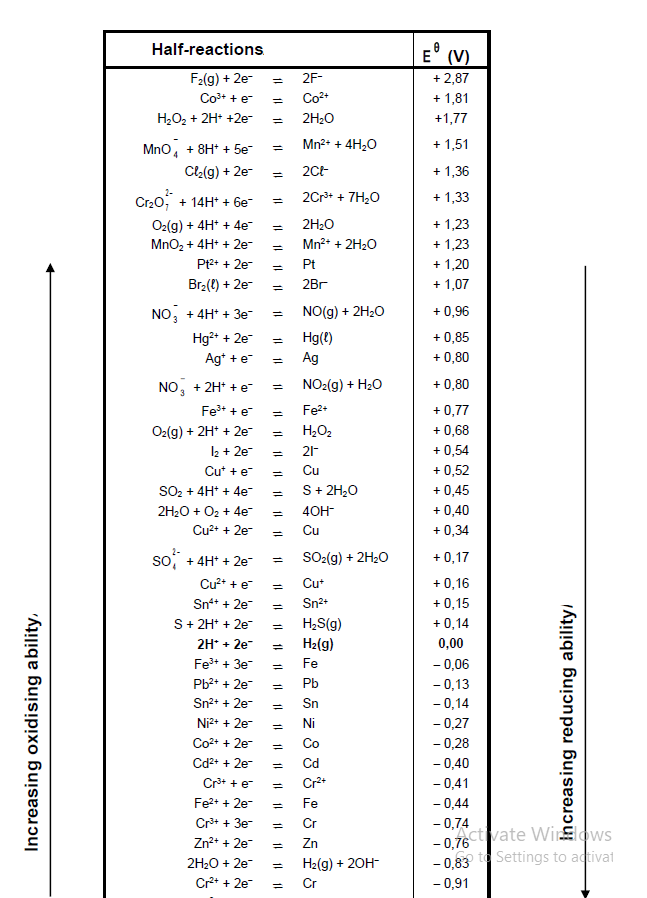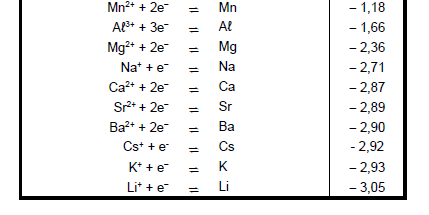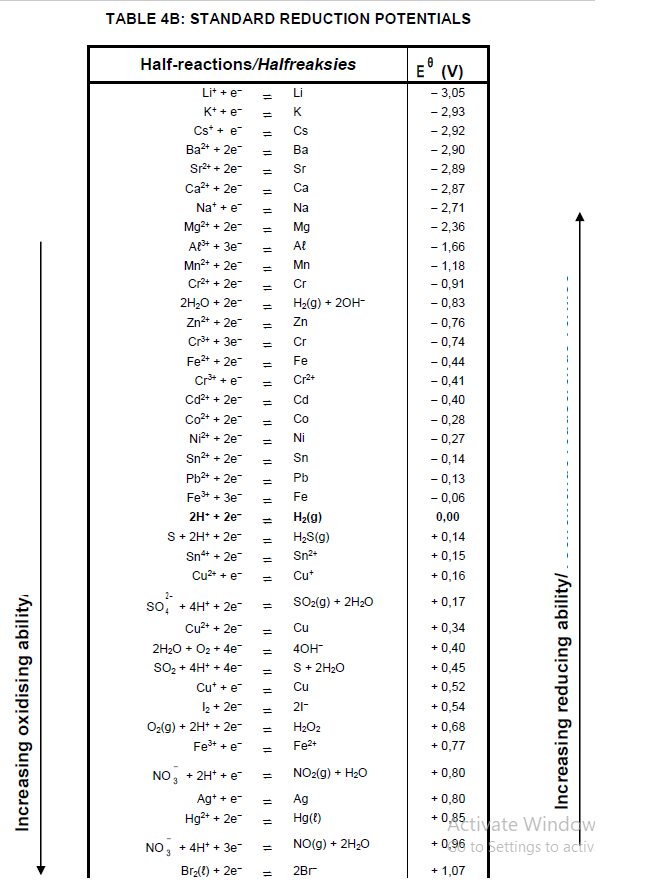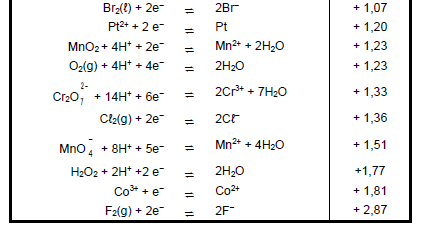PHYSICAL SCIENCES PAPER 2 GRADE 12 QUESTIONS - 2018 SEPTEMBER PREPARATORY EXAM PAPERS AND MEMOS
Share via Whatsapp Join our WhatsApp Group Join our Telegram GroupPHYSICAL SCIENCES PAPER 2
GRADE 12
NATIONAL SENIOR CERTIFICATE
SEPTEMBER 2018
INSTRUCTIONS AND INFORMATION
- Write your full NAME and SURNAME in the appropriate spaces on the ANSWER BOOK.
- This question paper consists of TEN questions. Answer ALL the questions in the ANSWER BOOK.
- Start EACH question on a NEW page in the ANSWER BOOK.
- Number your answers correctly according to the numbering system used in this question paper.
- Leave ONE line between two sub-questions, for example between QUESTION 2.1 and QUESTION 2.2.
- You may use a non-programmable calculator.
- You may use appropriate mathematical instruments.
- You are advised to use the attached DATA SHEETS.
- Show ALL formulae and substitutions in ALL calculations.
- Round off your final numerical answers to a minimum of TWO decimal places.
- Give brief motivations, discussions, et cetera where required.
- Write neatly and legibly.
QUESTION 1: MULTIPLE-CHOICE QUESTIONS
Four possible options are provided as answers to the following questions. Each question has only ONE correct answer. Write only the correct letter (A–D) next to the question number (1.1–1.10) in the ANSWER BOOK, for example 1.11 E.
1.1 Consider the compound given below.
CH ≡ CH
To which homologous series does the compound belong?
- Alkanes
- Alkenes
- Alkynes
- Haloalkanes (2)
1.2 Study the structural formula of a ketone shown below.
Which ONE of the following is a structural isomer of the ketone shown above?
- Propane
- Propanal
- Propan-1-ol
- Propan-2-ol (2)
1.3 The CRACKING process and POLYMERISATION process are represented by the reactions given below. Compounds P and Q are organic compounds.
Compound P is the same in both processes.
C15H32 → 2 P + Q + C8H18 … CRACKING
5 P → (CH2CH2)5 … POLYMERISATION
Which ONE of the following gives the CORRECT IUPAC names of compound P and compound Q?
| P | Q | |
| A | Ethene | Propene |
| B | Ethane | Propane |
| C | Ethene | Hex-1-ene |
| D | Ethane | Hexane |
(2)
1.4 Consider the equation below:
HCO3 (aq) + OH (aq) → CO32- (aq) + H2O(ℓ)
Which ONE of the following pairs is a conjugate acid-base pair?
- HCO3 and OH
- HCO3 and CO32
- H2O and HCO3
- OH and CO32 (2)
1.5 The graph below shows boiling points of alkanes with the same molecular mass plotted against a quantity P.
Which ONE of the following is most likely represented by P?
- Chain length
- Strength of intermolecular forces
- Surface area of chain isomers
- Number of methyl side chains in chain isomers (2)
1.6 The reaction represented by the balanced equation below reaches equilibrium in a closed container.
2CrO42- (aq) + 2H+(aq) ⇌ Cr2O72- (aq) + H2O(ℓ)
Which ONE of the following changes will favour the forward reaction?
- Add water
- Add a catalyst
- Decrease pH
- Increase pH (2)
1.7 The reaction in a galvanic cell are shown below. Assume the cell functions under standard conditions.
Ni(s) + 2Ag+(aq) ⇌ Ni2+(aq) + 2Ag(s)
Which ONE of the following statements regarding this cell is TRUE?
- Silver is reduced
- Nickel is oxidised
- Silver is the anode
- Nickel is the cathode (2)
1.8 One mole of magnesium reacts with EXCESS sulphuric acid solution at 25 °C.
Mg(s) + H2SO4(g) → MgSO4(aq) + H2(g) ΔH < 0
Which ONE of the following changes will INCREASE the rate of reaction?
- Increase temperature
- Decrease temperature
- Increase the volume of sulphuric acid
- Decrease the concentration of sulphuric acid (2)
1.9 Which ONE of the following substances is a REACTANT in the first step of the Ostwald process?
- Nitrogen
- Nitric acid
- Ammonia
- Nitrogen monoxide (2)
1.10 A simplified diagram below shows the industrial extraction of aluminium (Aℓ) from aluminium oxide (Aℓ2O3) at temperature 1 000 °C.
Consider the following statements regarding electrode X above:
I Electrode X is the anode
II Aℓ3+ is reduced to Aℓ at electrode X
III O2(g) produced in the cell reacts with electrode X to form CO2(g).
Which one of the following statements is/are CORRECT?
- I only
- I and II only
- I and III only
- I, II and III (2)
[20]
QUESTION 2 (Start on a new page.)
2.1 The IUPAC name of an organic compound is 2,2,4-trimethylpentane.
For this compound write down:
2.1.1 The NAME of the homologous series to which it belongs (1)
2.1.2 Its STRUCTURAL formula (3)
2.1.3 The MOLECULAR formulae of the TWO products formed when the compound undergoes combustion in excess oxygen (2)
2.2 Study the condensed structural formulae for compounds A and B given below.
O O
ΙΙ ΙΙ
A. (CH3)2CHCCH2CH3 B. (CH3)2CH2CH2CCH3
2.2.1 Give a reason why compounds A and B are said to be positional isomers. (2)
2.2.2 Write down the compound STRUCTURAL formula and IUPAC name of another positional isomer of compounds A and B. (4)
2.3 Consider the compound given below:
For this compound, write down the:
2.3.1 IUPAC name (3)
2.3.2 TYPE of halo-alkane. Choose from PRIMARY, SECONDARY or TERTIARY (1)
[16]
QUESTION 3 (Start on a new page.)
The table below shows the vapour pressure values for the organic compounds A to E. The letters X, Y and Z represent vapour pressure values for compounds A to C.
| COMPOUND | IUPAC NAME | VAPOUR PRESSURE (kPa) at 20 °C |
| A | Pentane | X |
| B | 2-methyl butane | Y |
| C | 2,2-dimethyl propane | Z |
| D | Ethanol | 5,95 |
| E | Methanoic acid | 4,6 |
3.1 Give a reason why compounds A, B and C are said to be hydrocarbons. (2)
The values X, Y and Z are given in random order below.
| Vapour pressure at 20 °C (kPa) | 53,3 | 14,6 | 77 |
3.2 Choose the vapour pressure value that represents Y.
Fully explain the choice you made. (4)
3.3 Which ONE of the compound (D or E), has a HIGHER boiling point? (1)
Explain the answer by referring to:
3.3.1 Data in the table (1)
3.3.2 STRENGTH of the hydrogen bonds (2)
[10]
QUESTION 4 (Start on a new page.)
The flow diagram shows how an alcohol can be used to prepare other organic compounds. The letters A, B, C, D, E and F represent different organic reactions. X and Y are organic compounds.
4.1 Write down the type of reaction represented by reaction A. (1)
4.2 In reaction B, butan-1-ol reacts with a carboxylic acid in the presence of a catalyst to produce butyl ethanoate. Butyl ethanoate can be identified by its characteristic smell.
4.2.1 What safety precaution must be taken when smelling chemical compounds? (1)
For reaction B write down the:
4.2.2 Type of reaction (1)
4.2.3 IUPAC name of the carboxylic acid used (2)
4.2.4 STRUCTURAL formula of butyl ethanoate (2)
4.3 Use STRUCTURAL formulae to write down a balanced equation for reaction A. (4)
4.4 Reaction F involves two reactions (reaction C and reaction E). In reaction F butan-1-ol is converted to butan-2-ol through an intermediary, compound X.
Write down the:
4.4.1 STRUCTURAL formula of compound X produced in reaction C (2)
4.4.2 NAME or FORMULA of the inorganic reagent needed in reaction C (1)
4.4.3 Reaction condition needed for reaction E (1)
[15]
QUESTION 5 (Start on a new page.)
A group of learners used the apparatus below to investigate one of the factors that affects the rate of decomposition of hydrogen peroxide, H2O2.
The balanced equation for the reaction is:
2H2O2(aq) → 2H2O(ℓ) + O2(g)
5.1 Define rate of reaction in words. (2)
The learners conduct TWO experiments. The reaction conditions are summarised below.
Experiment I: 50 cm3 of a 1 mol.dm-3 of hydrogen peroxide solution initially at 25 °C is heated to 40 °C.
Experiment II: 50 cm3 of a 1 mol.dm-3 of hydrogen peroxide solution, to which a small amount of a substance Y initially at 25oC is heated to 40oC.
5.2 How does the initial average kinetic energy of H2O2 molecules in experiment I compare with the initial average kinetic energy of H2O2 molecules in experiment II?
Choose from HIGHER THAN, LOWER THAN or EQUAL TO. (1)
5.3 The reaction in experiment I takes 15 seconds to run to completion producing a total volume of oxygen of 28 cm3.
Calculate the average rate of reaction (in cm3.s-1) from the start to completion of the reaction in experiment I. (2)
The graph below shows changes in the potential energy during the decomposition of hydrogen peroxide in experiment I and experiment II.
5.4 Write down the investigative question for this investigation. (2)
5.5 Is the reaction ENDOTHERMIC or EXOTHERMIC?
Give a reason for the answer. (2)
5.6 In which experiment (I or II) is the rate of reaction HIGHER? (1)
5.7 Use the collision theory to fully explain the answer to QUESTION 5.6 above. (3)
[13]
QUESTION 6 (Start on a new page.)
The reaction below takes place in a sealed container. Equilibrium is established after some time.
N2O4(g) ⇌ 2NO2(g)
6.1 Define the term equilibrium in words. (2)
6.2 The pressure on the system is increased by decreasing the volume at constant temperature. How will this action affect the following?
Choose from INCREASES, DECREASES or NO EFFECT.
6.2.1 Number of moles of NO2 at equilibrium (1)
6.2.2 Equilibrium constant Kc
Give a reason for the answer. (2)
6.3 Three experiments are conducted to study changes in equilibrium concentrations of the N2O4 and NO2 when different initial concentrations of N2O4 are placed in a 2 dm3 flask which is then sealed.
The table below shows the equilibrium concentrations obtained in the experiments.
| Experiment | Temperature at which equilibrium is reached (oC) | Equilibrium concentration of N2O4 (mol.dm-3) | Equilibrium concentration of NO2 (mol.dm-3) |
| 1 | 25 | 0,0336 | 0,0125 |
| 2 | 25 | 0,0246 | 0,0107 |
| 3 | 25 | X | 0,0156 |
6.3.1 Calculate the initial number of moles of N2O4 placed in the flask in experiment 3. (9)
The graph of concentration versus time for experiment I is given below.
A change is made to the reaction mixture at t1.
6.3.2 How does the rate of forward reaction compare to the rate of the reverse reaction during the interval to to t1?
Choose from HIGHER THAN, LOWER THAN or EQUAL TO. (1)
6.3.3 Write down the change made at t1. (1)
[16]
QUESTION 7 (Start on a new page.)
7.1 Oxalic acid, H2C2O4 ionises in water in two steps as shown below.
STEP I H2C2O4 (aq) + H2O (ℓ) ⇌ (H2C2O4 )- (aq) + H3O+(aq)
Ka = 5,4 x 10-4 at 25 °C
STEP II (H2C2O4 )-(aq) + H2O(ℓ) ⇌ Q + H3O+(aq)
7.1.1 Is oxalic acid classified as a WEAK ACID or STRONG ACID?
Explain the answer by referring to the given information. (2)
7.1.2 Write down the formula for substance Q. (1)
7.2 The acetate ion, CH3COO- undergoes hydrolysis producing an alkaline solution.
7.2.1 Define the term hydrolysis of a salt. (2)
7.2.2 Write down the formulae of the TWO products of the hydrolysis of the acetate ion. (2)
7.3 A group of learners perform an experiment to determine the percentage purity of calcium carbonate in an IMPURE sample of calcium carbonate.
The learners first added a certain volume V of a hydrochloric acid solution of pH = 1 to the impure calcium carbonate sample of mass m.
7.3.1 Calculate the concentration of hydronium ions, [H3O+] in the hydrochloric acid solution. (3)
The acid added to the impure sample was found to be in excess. The excess hydrochloric acid was completely neutralised by 32,2 cm3 of a sodium hydroxide solution of concentration 0,025 mol.dm-3 according to the balanced equation.
NaOH(aq) + HCℓ(aq) → NaCℓ(aq) + H2O(ℓ)
Calculate the:
7.3.2 Number of moles of HCℓ that were in excess (3)
7.3.3 Percentage purity of the calcium carbonate if V = 50 cm3 and m = 0,3 g (6)
[19]
QUESTION 8 (Start on a new page.)
An electrochemical cell (cell P) consisting of half-cells A and B is assembled under standard conditions. The two half cells (A and B) are shown below. Nitrate solutions are used as electrolytes in the cell.
| Half-cell A | Sn(s) / Sn2+(aq) (1 mol.dm-3) |
| Half-cell B | Pt, X2(g) / X-(aq) (1 mol.dm-3) |
8.1 Define the term electrolyte. (2)
8.2 Write down:
8.2.1 ONE standard condition needed for half-cell B, but not needed in half-cell A (1)
8.2.2 The function of platinum in the above cell (1)
8.3 The Tin (Sn) electrode is connected to the NEGATIVE terminal of the voltmeter when the cell is functioning.
Is the Sn electrode the ANODE or CATHODE? (1)
8.4 The initial EMF of this cell is 1,5 V.
Identify gas X2 by means of calculations. (5)
8.5 The saltbridge is now removed after the cell was functioning for some time.
What effect will this change have on the voltmeter reading?
Choose from INCREASES, DECREASES or BECOMES ZERO.
Give a reason for the answer. (2)
8.6 Another cell (cell Q) is set up under standard conditions.
The following cell notation summarises cell Q: Mg/Mg2+ // Aℓ3+/Aℓ
Write down the balanced equation for the net (overall) reaction that takes place in cell Q. (3)
[15]
QUESTION 9 (Start on a new page.)
The diagram below shows the apparatus used during the electrolysis of a concentrated sodium chloride solution at 25 °C using carbon electrodes.
The balanced equation for the net (overall) cell reaction is:
2NaCℓ(aq) + 2H2O(ℓ) → Cℓ2(g) + H2(g) + 2NaOH(aq)
9.1 Write down the:
9.1.1 NAME of component X (1)
9.1.2 NAME or FORMULA of gas A (1)
9.1.3 Half-reaction taking place at electrode Q (2)
9.1.4 FORMULA of the reducing agent (1)
9.2 Which ONE of the following CORRECTLY describes the concentration of hydronium ions, [H3O+], in mol.dm-3, in the electrolyte after the cell reaction has run to completion?
| [H3O+] < 1 X 10-7 | [H3O+] > 1 X 10-7 | [H3O+] = 1 x 10-7 |
Explain the answer. (2)
9.3 The electrolyte (NaCℓ) is replaced with a CuCℓ2 solution.
The following observation is made about the products formed at electrode Q.
When CuCℓ2 solution is used, a metallic product is formed at Q but there is NO metallic product at Q when NaCℓ solution is used.
Explain this observation in terms of the strengths of oxidising agents involved. (3)
[10]
QUESTION 10 (Start on a new page.)
10.1 The equations below represent TWO industrial processes X and Y involved in the preparation of a fertiliser Z.
Compound P is added to oleum, H2S2O7 to obtain concentrated H2SO4.
Write down the:
10.1.1 NAME or FORMULA of the catalyst used in STEP II of process Y (1)
10.1.2 FORMULA of compound Q (1)
10.1.3 NAME of compound P (1)
10.1.4 NAME of process Y (1)
10.1.5 Balanced equation for the preparation of fertiliser Z (3)
The yield of NH3 changes with temperature and pressure during the industrial production of NH3 in Process X mentioned above.
The graphs below show the percentage of ammonia produced as the pressure changes.
3H2(g) + N2(g) ⇌ NH3(g) ΔH < 0
Graph P is obtained when the reaction reaches equilibrium at 450 °C.
10.1.6 Is graph Q obtained at a temperature HIGHER THAN or LOWER THAN 450 °C?
Fully explain the answer. (4)
10.2 A bag of N:P:K fertiliser contains 4% nitrogen, 8% phosphorus, 6 kg potassium and 76% filler.
10.2.1 What is the role of potassium in plant growth? (1)
10.2.2 Calculate the mass of the bag. (4)
[16]
TOTAL: 150
NATIONAL SENIOR CERTIFICATE
DATA FOR PHYSICAL SCIENCES GRADE 12
PAPER 2 (CHEMISTRY)
TABLE 1: PHYSICAL CONSTANTS
| NAME | SYMBOL | VALUE |
| Standard pressure | pθ | 1,013 x 105 Pa |
| Molar gas volume at STP | Vm | 22,4 dm3∙mol-1 |
| Standard temperature | Tθ | Tθ 273 K |
| Charge on electron | e | -1,6 x 10-19 C |
| Avogadro’s constant | NA | NA 6,02 x 1023 mol-1 |
TABLE 2: FORMULAE
n = m | n = N NA |
| c = n V or c = m MV | n = V Vm |
| caVa= na cbVb nb | pH= -log[H3O+] |
| Kw = [H3O+][OH-] = 1x10-14 at 298K | |
| Eθ cell = Eθ cathode – Eθ anode Eθ cell = Eθ reduction – Eθ oxidation Eθ cell = Eθ oxidising agent – Eθ reducing agent |

TABLE 4A: STANDARD REDUCTION POTENTIALS



